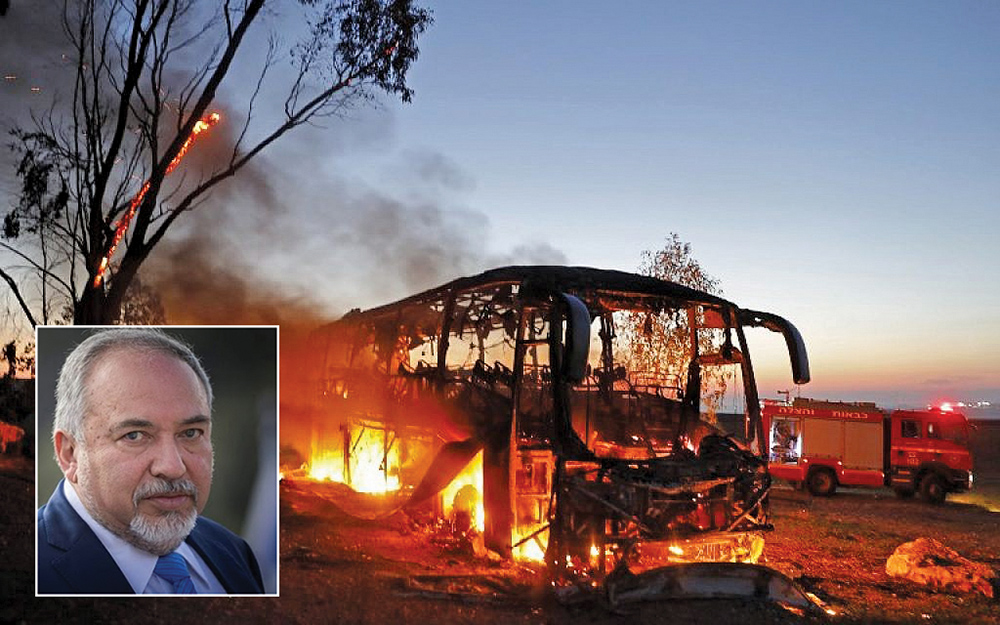
After 24 hours of intense exchanges of fire, Israel and Hamas reached a ceasefire on Tuesday, and two very different narratives emerged in Israel to describe what had happened.
But first, the bare facts: A special-forces operation in Gaza was exposed by Hamas on Sunday night, and in the resulting gun fight, one Israeli officer and seven Hamas members were killed.
A day later, the Gazan terror factions decided to revenge their losses by launching a coordinated mass rocket assault on southern Israel, firing some 450 projectiles at Israeli civilian communities and an anti-tank missile at a military bus.
These attacks resulted in a Palestinian worker being killed by a direct rocket strike in Ashkelon, and some 50 injured Israelis, including one seriously injured woman, in addition to a seriously injured soldier. Several homes and buildings sustained major damage.
The Iron Dome missile-defense system shot down 100 Gazan projectiles heading into built-up areas, preventing much greater carnage on the ground.
For its part, the Israel Defense Forces struck 160 Hamas and Palestinian Islamic Jihad targets across Gaza, mostly through airstrikes. Four of the targets were described by the military as strategic, high-value enemy assets, including Hamas’ military intelligence multistory building and an Al-Aqsa television station, both of which were utterly demolished.
Approximately 20 Gazan combatants were killed in this round of escalation, according to Israeli officials. Other Hamas and Palestinian Islamic Jihad targets the IDF struck included weapons factories, offensive tunnels and command posts.
In the hours after the ceasefire was reached, Israeli youths from the rocket-battered town of Sderot burned tires and clashed with police, venting their anger over what they perceived as the government’s capitulation to Hamas’ extortionist tactics and the lack of a decisive Israeli victory.
A wide swath of the Israeli public views the ceasefire as a Hamas achievement. Many citizens feel let down and deeply frustrated after seeing the south come under intense terrorist fire, and Israel taking relatively limited, calculated steps in the form of airstrikes in response.
But a second and very different narrative also exists in Israel, and it’s one that was adopted by a majority of the diplomatic-security cabinet. This narrative holds that Hamas absorbed painful strikes and is masking this with propaganda claims of victory.
The cabinet held an all-day closed-door briefing throughout Tuesday, and heard a succession of assessments and recommendations by defense chiefs. Shortly afterward, the truce was announced.
So what did the cabinet hear throughout the day? While the content of the discussions remains classified, it appears that the Israeli defense establishment wants to prioritize military readiness and resources for the larger threats developing in the northern arena. While Steinitz did not rule out the possibility of a full-scale war with Hamas, he made it clear that the cabinet had no interest to rush into this.
The two narratives in Israel can be expected to continue to clash.
By Yaakov Lappin/JNS.org










